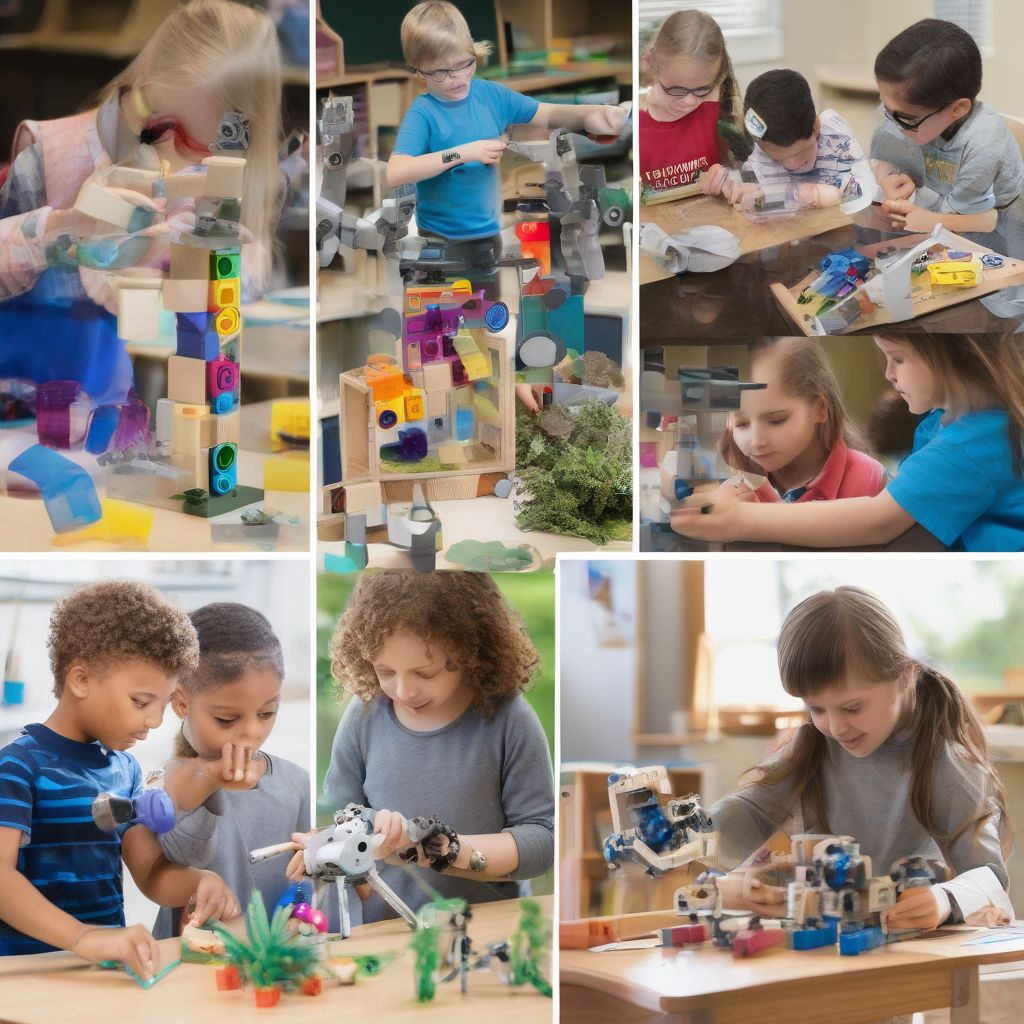“Mommy, how do airplanes fly?”
“Daddy, why is the sky blue?”
Sound familiar? Children are naturally curious. Their little brains are bursting with questions about the world around them. As parents and educators, we have a fantastic opportunity to nurture that curiosity and lay the foundation for a lifelong love of learning, especially in the fascinating fields of science, technology, engineering, and math – or what we call STEM.
But before your eyes glaze over at the thought of complex equations and high-tech gadgets, let me assure you: incorporating STEM activities into children’s lives doesn’t have to be intimidating! It doesn’t require a fancy lab or an advanced degree. Some of the most effective STEM learning happens through simple, playful activities that spark a child’s imagination and get them thinking critically about the world.
This article will explore creative and engaging ways to weave STEM activities into children’s lives, fostering a love for these critical subjects from an early age.
Why is STEM Education Important?
In today’s rapidly evolving world, STEM skills are more crucial than ever. They are becoming increasingly important in the workforce and for navigating everyday life. Exposing children to STEM concepts early on offers numerous benefits:
- Develops Critical Thinking: STEM activities encourage children to problem-solve, analyze information, and think creatively to find solutions.
- Nurtures Curiosity and Inquiry: STEM learning fosters a sense of wonder and a desire to understand how things work.
- Enhances Problem-Solving Abilities: STEM challenges children to identify problems, explore different approaches, and develop solutions.
- Boosts Creativity and Innovation: STEM activities provide opportunities for children to experiment, invent, and think outside the box.
- Prepares for the Future: A strong STEM foundation opens doors to a wide range of exciting career paths and equips children with essential skills for the future.
Fun and Engaging STEM Activities for Kids of All Ages:
The beauty of STEM is that it can be explored through a variety of activities that align with children’s natural interests and developmental stages.
For the Little Explorers (Preschool and Kindergarten):
- Building Blocks Bonanza: Simple building blocks are more than just toys; they are tools for learning about structural integrity, balance, and spatial reasoning.
- Sensory Play with Water: Water tables or even a simple bowl of water can offer endless opportunities for exploration. Children can experiment with volume, buoyancy, and the properties of water through play.
- Nature Walks with a Twist: Turn an ordinary walk into a STEM adventure by encouraging children to observe and ask questions about the plants, insects, and animals they encounter.
For the Budding Scientists (Elementary School):
- Kitchen Chemistry Experiments: The kitchen is a fantastic laboratory in disguise! Simple experiments, like making slime, baking a cake (measuring ingredients is math!), or creating a volcano with baking soda and vinegar, can make science fun and relatable.
- Backyard Bug Safari: Armed with magnifying glasses and a field journal, children can embark on a bug hunt in their backyard or a local park, learning about different species and their roles in the ecosystem.
- DIY Bird Feeders: Constructing a simple bird feeder provides an opportunity to learn about different bird species, their feeding habits, and the importance of conservation.
For the Tech-Savvy Tweens (Middle School):
- Robotics Kits: Engaging with robotics kits allows children to build and program their own robots, teaching them about coding, mechanics, and electronics in a hands-on way.
- Coding Games and Apps: Numerous online platforms and apps make learning to code fun and interactive, allowing children to create their own games, animations, and digital projects.
- Stop Motion Animation: Using simple materials like clay or toys, children can create their own stop-motion animation videos. This activity combines creativity with technology and teaches them about storytelling, timing, and filmmaking basics.
 STEM Activities for Kids
STEM Activities for Kids
Tips for Creating a STEM-Rich Environment:
- Encourage Questions: Let children’s questions be the starting point for exploration. Don’t be afraid to say, “I don’t know, let’s find out together!”
- Embrace Mistakes: Frame mistakes as opportunities for learning and growth. Help children understand that setbacks are a natural part of the scientific process.
- Make it Hands-On: Children learn best by doing. Provide plenty of opportunities for hands-on experimentation and exploration.
- Keep it Fun and Engaging: Learning should be enjoyable! Choose activities that are developmentally appropriate and capture children’s interests.
- Connect STEM to Real Life: Help children see the relevance of STEM in their everyday lives. Explain how engineers design bridges, how doctors use science to heal, or how mathematicians solve problems.
STEM Resources for Parents and Educators:
[amazon bestseller=”STEM activity books for kids”]
- Your Local Library or Science Museum: These institutions often offer STEM-focused programs, workshops, and resources for children and families.
- Online Educational Platforms: Websites like National Geographic Kids, NASA Kids’ Club, and Science Bob offer a wealth of information, videos, and activities related to STEM subjects.
Conclusion:
Incorporating STEM activities into children’s lives doesn’t have to be complicated or overwhelming. By fostering their natural curiosity and providing opportunities for exploration and discovery, we can help them develop a lifelong love of learning and equip them with the skills they need to thrive in our increasingly technology-driven world. Remember, STEM is for everyone, and learning about it should be fun, engaging, and empowering for children of all ages.
What are your favorite ways to incorporate STEM activities into the lives of children? Share your ideas and experiences in the comments below!
